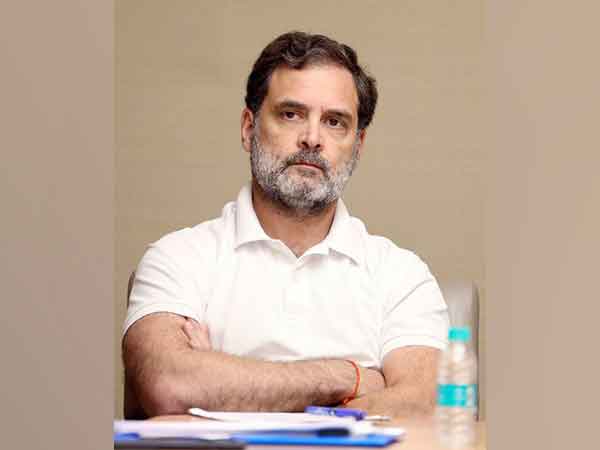The cultural connection between First Nations groups and dingoes will be tested in the Supreme Court of Victoria, which will consider a legal challenge to a state-sanctioned killing program in June. Animals Australia is suing the Victorian government over its 2024 decision to “unprotect” dingoes in the north-east of the state, alleging the decision is in breach of Victoria’s Charter of Human Rights and Responsibilities, which seeks to protect Aboriginal people’s “distinct cultural rights”. Kelly Ann Blake and her dingo, Jack.
Credit: Jason South Dingoes are a threatened species in Victoria and, as such, the government is required to make orders removing their protected status to allow landholders to kill the animals. Under the charter, it is unlawful for public authorities to act in a way that is incompatible with a human right, or fail to properly consider relevant human rights when making a decision. Last March, the Victorian government ended an “unprotection order” in place for Big Desert dingoes, which had allowed them to be killed on public land.

Departmental advice provided to Environment Minister Steve Dimopoulos in September, and released under freedom of information laws, shows there could be just 16 adults of breeding age left in the district. But Dimopouolos and Agriculture Minister Ros Spence kept an unprotection order in place for dingoes in the east and north-east of the state, despite Traditional Owner groups stressing the animals hold cultural and spiritual significance to First Nations peoples. Meliki the purebred black and tan dingo at the Dingo Discovery Sanctuary and Research Centre in Toolern Vale.
Credit: Chris Hopkins The Environment Department says about 1000 sheep are killed or maimed by dingoes each year in Victoria’s east. Wadawurrung woman Kelly Ann Blake – who has a pet dingo, Jack – joined the Animals Australia legal challenge to the unprotection order as a co-litigant. “Removing protection of Darrwal/Kaal [dingo] strips away legal recognition but also spiritual and cultural respect,” Blake said.
“It demonstrates a continued effort to erase who we are as First Nations people and all that we are connected to – physically, spiritually, and culturally.” Kelly Ann Blake said the government decision to unprotect dingoes felt like a dismissal of culture. Credit: Jason South In Wadawurrung language, Blake said, “Darrwal” is a wild dingo, while “Kaal” is a tame or camp dingo.
Documents released under freedom of information showDimopoulos and Spence were aware of the conflict between the Human Rights Charter’s commitment to protecting Aboriginal cultural rights and the unprotection order. The documents show the department embarked on a three-day consultation period with Traditional Owner groups in September last year, before the order was made. “Some Traditional Owners experience the impacts on the dingo as a loss of a family member and a continuation of the impacts of colonisation,” the ministers wrote in a Human Rights Certificate that accompanied their declaration.
“As such, enabling the taking and killing of dingoes may impact upon the right of Aboriginal persons to maintain their distinctive spiritual relationship with the dingo. To the extent such Aboriginal persons have spiritual connections to the dingo, it may also impact their right to enjoy their identity and culture.” However, the ministers stated 10 days after the consultation took place, the decision could be justified because it would act to protect livestock against predation.
Dingoes can be killed on private land, and on public land within three kilometres of private land, in much of the east of the state. Dingoes, which were once widespread across Victoria, are now extinct in much of the state. Populations remain in Big Desert in the Mallee region in the north-west of the state, and in eastern Victoria.
Dimopoulos and Spence were told there are an estimated 16 adults of breeding age in Big Desert, and 2940 in the state’s east. Secretary of the Dingo Conservancy Dr Jo Samuel-King called on the Victorian government to properly protect dingoes and transfer the $5 million spent every year on the dingo killing program to livestock protection and dingo conservation. “There’s an acknowledgement that Traditional Owner rights have been trampled but for the sake of 1000 sheep, and that’s 1000 sheep out of a [statewide] flock of 14 million,” she said.
“That’s not as if we’re short on sheep. What we are short on is any government funding being directed towards assisting affected graziers to adapt.” A spokesman said the Victorian government was supporting farmers with an additional $2 million support package to “fund trials, research and on-ground advice on non-lethal dingo management strategies that minimise the risk of livestock predation”.
“We are striking the right balance between protecting our vulnerable dingo populations while giving farmers the ability to protect their livestock, by remaking the dingo unprotection order in eastern and north-eastern Victoria until 1 January 2028.” The Age reported earlier this month government plans to fit protected wild dingoes in western Victoria with electronic collars and monitor their behaviour, a move opposed by Traditional Owners. Start the day with a summary of the day’s most important and interesting stories, analysis and insights.
Sign up for our Morning Edition newsletter ..
Environment

‘Death of a family member’: Government sued over dingo killing

The decision to “unprotect” dingoes is being challenged, with claims the move erases the cultural rights of First Nations people.















